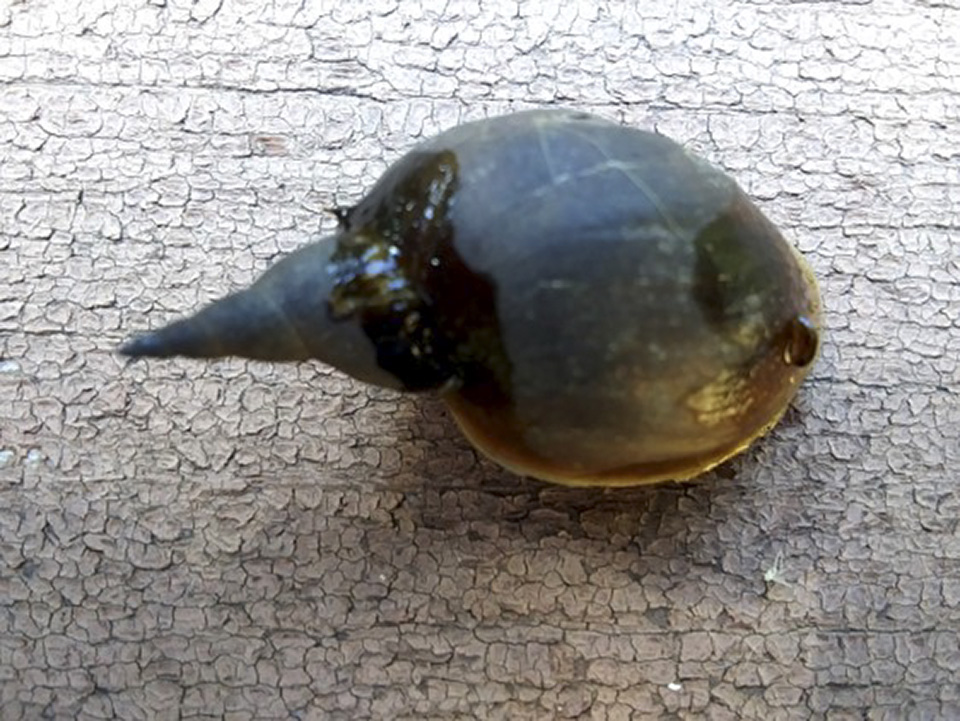
Great pond snail (Lymnaea stagnalis) is a very large, air-breathing, freshwater snail. It is commonly sold as an aquarium pet. The body contains both male and female reproductive organs (hermaphroditic). During copulation either the male role or the female role can be performed, though not both. This makes it the ideal subject for recent scientific research into handedness (chirality).
Great pond snail occurs in Europe, Asia, North America, and southern Australia. It occurs throughout the United States and Canada, but it is uncommon south of the 40th parallel. It is common in Minnesota. It is found in permanent, slow or still waters, usually with dense vegetation, including creeks, streams, rivers, marshes, swamps, and reservoirs, and at the edges of lakes and large ponds.
The shell is thin and has 4½ to 6 whorls. The last whorl is the body whorl and is greatly inflated. The remaining whorls are elevated forming a sharply pointed spire. When seen with the tip at the top and the opening facing up, the opening is on the right side. There is no door-like structure covering the opening of the shell. The shell is variable in color, tan to dark brown, and it has no obvious markings. A cavity within the shell has an air bubble that is refreshed every time the snail rises to the water surface to breathe.
http://www.minnesotaseasons.com/Snails/great_pond_snail.html

